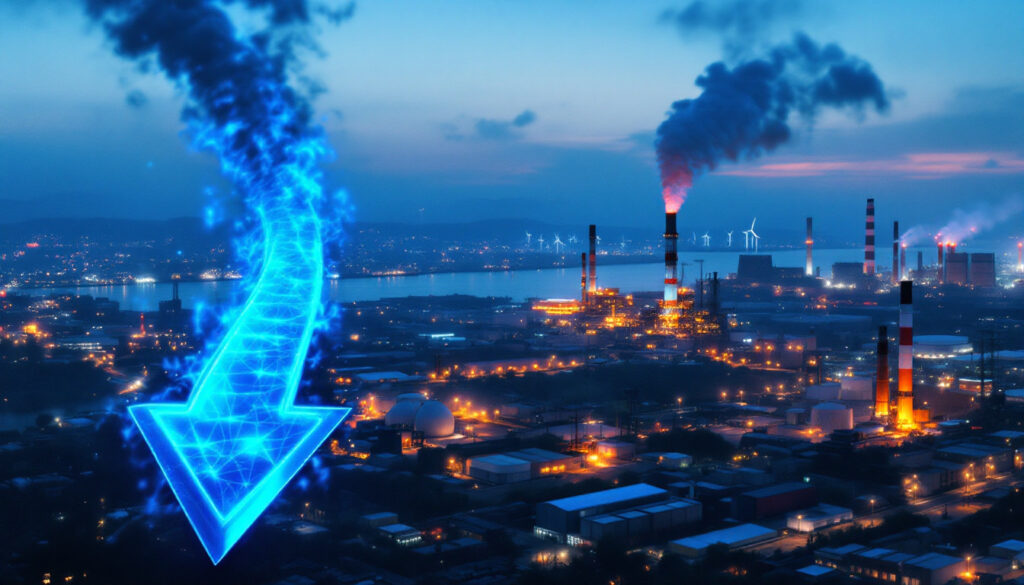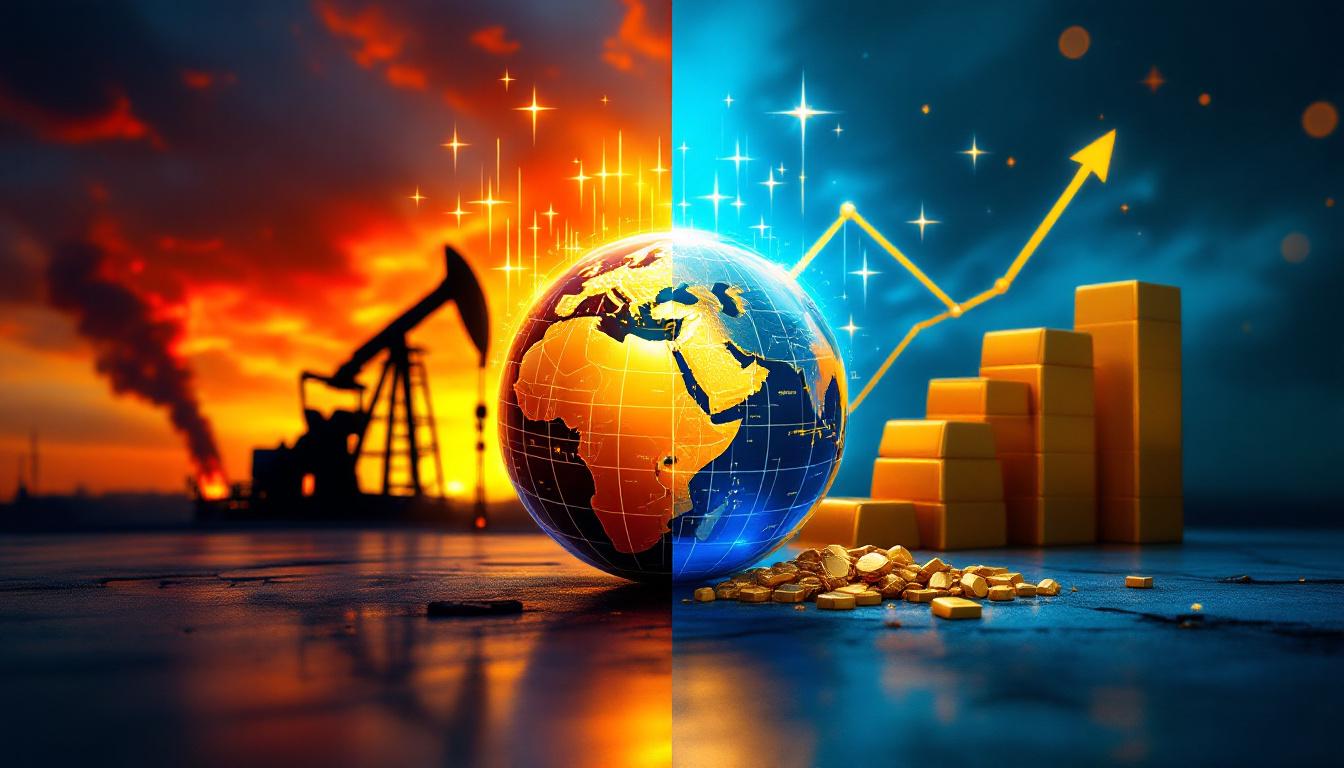European Gas Prices Drop: Market Trends and Economic Impact
European natural gas prices, as measured by the TTF Gas Futures, experienced a significant decline of 7.7% on April 9, 2025, marking a continuation of downward trends observed over consecutive trading sessions. This shift reflects broader market anxieties tied to U.S. trade policies under President Donald Trump, fears of a global trade war, and revised industrial demand forecasts. The interplay between geopolitical tensions, economic growth concerns, and seasonal demand fluctuations has created a complex landscape for European energy security and corporate strategy.
Why Are European Gas Prices Falling?
Recent Price Movements
The TTF Gas Futures, Europe's benchmark for natural gas, fell sharply by 7.7% on April 9, 2025, extending losses from previous sessions. This decline aligns with a 15% cumulative drop over the past month, signaling a bearish market sentiment driven by macroeconomic uncertainties. Analysts attribute this trend to a combination of oversupply conditions and weakening demand projections, particularly in energy-intensive industries such as manufacturing and chemicals.
Key Factors Driving the Price Drop
Trade Policy Volatility
The Trump administration's recent tariff announcements targeting European exports have intensified fears of retaliatory measures, disrupting global trade flows. Trump's global trade impact has been particularly evident in energy markets, where proposed tariffs on steel and aluminum could reduce industrial activity by 3–5% in key sectors, directly lowering natural gas consumption.
Economic Growth Concerns
Revised GDP forecasts for the Eurozone, down from 1.2% to 0.8% for 2025, have further dampened energy demand expectations. The Manufacturing Purchasing Managers' Index (PMI) for Germany, a critical industrial hub, fell to 48.3 in March 2025, indicating contraction and reduced energy use.
Seasonal Adjustments
Warmer-than-anticipated spring temperatures across Northern Europe have decreased heating demand, contributing to a 12% year-over-year decline in residential gas consumption. Storage facilities, currently at 65% capacity—15% above the five-year average—have alleviated supply concerns.
How Are Global Economic Tensions Affecting Energy Markets?
Trade War Concerns
The U.S.-EU trade dispute has created ripple effects across commodity markets. For instance, the European Commission's proposal to impose tariffs on liquefied natural gas (LNG) imports from the U.S. threatens to destabilize supply chains, potentially raising costs for downstream industries by 8–10%. Markets are pricing in a 20% probability of full-scale trade restrictions, which could erase €15 billion from EU energy sector valuations.
Economic Growth Indicators
Weakening industrial activity is evident in revised energy consumption forecasts. The International Energy Agency (IEA) projects a 4% reduction in EU gas demand for 2025, with heavy industry sectors like cement and steel facing the steepest cuts. Simultaneously, the European Central Bank's decision to maintain high interest rates (4.5%) has constrained capital expenditure in energy infrastructure, delaying projects worth €7 billion.
What Does This Mean for European Energy Security?
Supply and Demand Balance
Despite price declines, Europe's gas storage levels remain robust at 65% capacity, compared to 50% in 2024. This surplus has reduced urgency for spot market purchases, with LNG imports from Qatar and the U.S. increasing by 18% year-to-date. However, overreliance on imports—which now constitute 90% of EU gas supply—heightens vulnerability to geopolitical investor strategies and external shocks.
Energy Transition Implications
Lower gas prices risk slowing renewable energy investments. For example, Vestas Wind Systems (VWDRY) reported a 12% dip in new orders for Q1 2025, attributing this to reduced competitiveness of wind power relative to cheaper gas. EU carbon permit prices have also fallen by 8%, undermining incentives for clean energy adoption and exposing carbon credits myths in carbon markets.
How Are Energy Companies Responding?
Major Energy Players Affected
BP, TotalEnergies (TTE), and Shell have announced capex cuts of €10 billion collectively, diverting funds to hydrogen and carbon capture projects. Shell's Q1 2025 earnings fell 15% year-over-year, prompting a strategic pivot to LNG infrastructure in Asia.
Renewable Energy Sector Impact
Vestas and Engie (ENGIY) are lobbying for increased subsidies, arguing that current gas prices distort market dynamics. Engie's solar division has paused two major projects in Spain, citing unfavorable ROI calculations amid cheap gas.
What's the Outlook for European Gas Prices?
Short-Term Projections
Technical analysis suggests TTF futures could stabilize near €25/MWh by Q3 2025, contingent on summer cooling demand. The EU's planned release of 5 bcm from strategic reserves may further suppress prices, according to recent market analysis.
Long-Term Considerations
Infrastructure expansions, such as the Baltic Pipe project (slated for 2026), aim to diversify supply sources, potentially reducing price volatility by 30%. Policy measures, including the Carbon Border Adjustment Mechanism, could reinstill demand for gas as a transition fuel.
FAQ About European Gas Prices
How Do European Gas Prices Compare Globally?
The TTF-Henry Hub spread widened to €8/MWh in April 2025, reflecting Europe's premium due to import dependency. This pricing differential highlights the continued fragmentation of global commodity insights, with European consumers paying significantly more than their American counterparts despite increased LNG imports.
What Investment Opportunities Exist?
ETFs like UNG and BOIL offer exposure but carry high volatility risks. Hedging strategies using futures contracts have gained traction among manufacturers. For institutional investors, infrastructure projects like LNG terminals offer long-term returns with reduced exposure to spot market fluctuations.
Geopolitical Risks to Monitor
Escalating tensions in the Middle East and potential Russian supply disruptions remain critical wildcards. The ongoing Ukraine-Russia conflict continues to influence European energy security calculations, with potential pipeline disruptions representing a persistent threat to market stability, as highlighted in recent European price trends.
Market Psychology and Trading Strategies
Sentiment Indicators
Market sentiment has shifted dramatically bearish, with the put/call ratio for natural gas futures reaching 1.8, indicating strong expectations for continued price declines. Technical traders are closely monitoring the €22/MWh support level, which has held during previous downturns.
Smart Money Positioning
Institutional investors have increased short positions by 22% since March, while hedging activity among industrial consumers has reached a three-year high. This divergence between speculative and commercial interest signals potential market rebalancing in Q3 2025.
Regulatory Landscape Evolution
EU Policy Directions
The European Commission's upcoming revisions to the Gas Directive, expected in July 2025, aim to strengthen market integration while enhancing emergency response mechanisms. These regulatory changes could introduce mandatory minimum storage requirements, potentially creating price floors during seasonal lows.
Carbon Policy Interaction
The interaction between gas prices and the EU Emissions Trading System (ETS) continues to evolve, with carbon prices now showing increased sensitivity to natural gas movements. A 10% decrease in gas prices correlates with approximately 5% reduction in carbon permit values, creating complex hedging challenges for compliance entities.
The European gas prices drop reflects a complex interplay of global economic tensions, seasonal factors, and structural market changes. While offering short-term economic benefits to consumers and energy-intensive industries, sustained low prices present challenges for energy transition goals and security considerations. Market participants must navigate this evolving landscape with flexible strategies that account for both immediate price signals and longer-term policy and infrastructure developments.
Are You Looking for the Next Major Mineral Discovery?
Get instant notifications on significant ASX mining discoveries with Discovery Alert's proprietary Discovery IQ model, which converts complex geological data into actionable investment insights. Explore why historic discoveries can generate substantial returns by visiting our dedicated discoveries page and begin your 30-day free trial today to position yourself ahead of the market.




